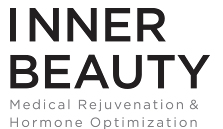The Scoop on Folate vs. Folic Acid

January is Folic Acid Awareness Month. But, when you look at folate vs. folic acid it’s pretty easy to get confused. Is folate the same as folic acid? What are good sources of folic acid? Let’s clear up the confusion between folate vs. folic acid. We’ll also help you understand the difference between the two. Why you need it. And where to get your needed amounts.
Folate vs. Folic Acid: Is Folate the Same as Folic Acid?
Folate and folic acid are also known as B9 and belong to the very important B vitamin family. B vitamins are water soluble vitamins that are essential to brain, neural tube and cell function. They also impact DNA synthesis, skin integrity, mood, energy and more. Many people wonder “is folate the same as folic acid?” Simply put, folate is the natural source of B9 found in green, leafy vegetables and some other foods. Folic acid is the synthetic form of folate added to some foods and supplements. Folate and folic acid are used interchangeably. Our bodies don’t produce folate naturally. But it’s something we need every day. In fact, folate is so important to our survival that the USDA began adding it to foods decades ago. Next time you buy a loaf of bread look on the label “fortified with folic acid.”
Baby and Me
Remember popping that daily prenatal vitamin? You may have not known it, but getting adequate amounts of folate is one of the most important things a mom-to-be does in pregnancy. In fact, it’s recommended that women who are trying to conceive begin a folic acid regimen. Remember, folic acid is a water soluble vitamin. You won’t overdose! So, why is folic acid so important to babies? The neural tube of a fetus closes early in pregnancy. But, without adequate amounts of folic acid the neural tube may not close properly. Neural tube defects like spina bifida were once common. But, with the addition of folic acid to foods and prenatal vitamins, millions of defects have been prevented. With that, even women who don’t know they are pregnant until a few weeks into the pregnancy get some folic acid through diet.
Beyond Baby: For Mom
Even beyond the childbearing years, women need a daily dose of folate. Folate is a critical part of DNA synthesis. This plays a big part in mood regulation. However, genetics, comorbidities and certain medications block the full absorption of folate. It just can’t do the job. Talk to Dr. Russo if you think this may be you. She can help you pinpoint triggers leading to poor absorption of folate and tailor a plan right for you.
Good Sources of Folic Acid
Since some foods are fortified with folic acid, look for the following to add to your shopping list in order to get your daily dose.
Folic Acid Foods:
- Cereals: cereals that are grain-heavy are best choices for folic acid (over sugary choices)
- Pastas: most basic pastas are fortified
- Rice: white rice, some brown rice
- Breads: sandwich bread, flat bread, some bagels (read the label)
Here are some foods to look for that naturally contain folate.
Folate Foods:
- Citrus fruits: oranges, grapefruit; orange juice and grapefruit juice
- Beans and legumes: black beans, red kidney beans, pinto beans, green beans
- Green, leafy vegetables: spinach, kale, collards, greener members of the lettuce family
Remember, get creative with adding folate to your daily diet. A big leafy salad with added black beans. Yum! A glass of orange juice with your bowl of fortified granola in the morning. Once you get the hang of folate it’ll be easy to spot ways to add it to your life forever.
Take this easy folic acid quiz to learn more ways to get your daily dose. Keep checking the Inner Beauty blog for more helpful education!
